Schedule
In this three-day AI conference at San Jose, we bring together leading scientists and practitioners who have deployed large-scale AI products. You will gain a front-row seat of the frontiers of AI and machine learning, and have opportunities to network with others who are enthusiastic about AI technologies and products.
View Schedule SummaryDay 1November 9, 2018
8:50 - 9:00am
Opening Remarks
by Junling Hu, Conference Chair
by Junling Hu, Conference Chair
Opening Remarks
by Junling Hu, Conference Chair
by Junling Hu, Conference Chair
9:00 - 9:50am
Keynote
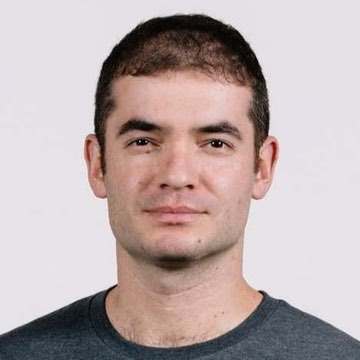 Ilya SutskeverCo-Founder & DirectorOpenAI
Ilya SutskeverCo-Founder & DirectorOpenAIKeynote
Ilya Sutskever : Recent Advances in Deep Learning and AI from OpenAI (Slides)
I will present several advances in deep learning from OpenAI. First, I will present OpenAI Five, a neural network that learned to play on par with some of the strongest professional Dota 2 teams in the world in an 18-hero version of the game. Next, I will present Dactyl, a human-like robot hand trained entirely in simulation with reinforcement learning that has achieved unprecedented dexterity on a physical robot. I will also present our results on unsupervised learning in language, that show that pre-training and finetuning can achieve a significant improvement over state of the art. Finally, I will present an overview of the historical progress in the field.
10:00 - 11:30am
Video Understanding
 Matt FeiszliResearch ManagerFacebook
Matt FeiszliResearch ManagerFacebook Divya JainDirectorAdobe
Divya JainDirectorAdobe Roland MemisevicChief ScientistTwentyBN
Roland MemisevicChief ScientistTwentyBNmoderator:
 Vijay ReddyInvestorIntel Capital
Vijay ReddyInvestorIntel CapitalVideo Understanding
Matt Feiszli : Video Understanding: Modalities, Time, and Scale (Slides)
I will discuss the state of the art of video understanding, particularly its research and applications at Facebook. I will focus on two active areas: multimodality and time. Video is naturally multi-modal, offering great possibility for content understanding while also opening new doors like unsupervised and weakly-supervised learning at scale. Temporal representation remains a largely open problem; while we can describe a few seconds of video, there is no natural representation for a few minutes of video. I will discuss recent progress, the importance of these problems for applications, and what we hope to achieve.
Divya Jain : Video Summarization (Slides)
As video content is becoming mainstream, video summarization is becoming a hot research topic in academia and industry. Video thumbnail generation and summarization has been worked on for years, but deep learning and reinforcement learning is changing the landscape and emerging as the winner for optimal frame selection. Recent advances in GANs are improving the quality, aesthetics and relevancy of the frames to represent the original videos. Come join this session to get an understanding of various challenges and emerging solutions around video summarization.
Roland Memisevic : Teaching machines common sense understanding of the world around them (Slides)
In this talk, I will introduce an AI system that interacts with you while "looking" at you - to understand your behaviour, your surroundings and the full context of the engagement. At the core of this technology is a crowd acting-platform, that allows humans to engage with and teach the system about everyday aspects of our lives and of our physical world. Combining this with deep neural networks makes it possible to generate a high degree human-like "awareness" of everyday scenes and situations. I will describe how this technology allows devices, ranging from information kiosks to cars, to engage with humans more naturally and instinctively, and how TwentyBN uses this ability to create commercial value for our customers.
11:30 - 12:00pm
AI in Security
 Rajarshi GuptaHead of AIAvast
Rajarshi GuptaHead of AIAvastAI in Security
Rajarshi Gupta : Security is AI’s biggest challenge, and AI is Security’s greatest opportunity (Slides)
The progress of AI in the last decade has seemed almost magical. But we will discuss the unique challenges posed by Security and what makes this domain the biggest challenge for AI. Reporting from the frontlines, we will describe the deployment of large-scale production-grade AI systems to combat security breaches, using lessons learned at Avast from defending over 400 million consumers every single day. Topics will cover the recent AI advancements in file-based anti-malware solutions, behavior-based on-device solutions, and network-based IoT security solutions.
12:00 - 1:00pm
Lunch
1:00 - 1:30pm
Afternon Keynote
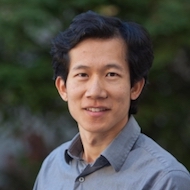 Percy LiangAssistant ProfessorStanford University
Percy LiangAssistant ProfessorStanford UniversityAfternon Keynote
Percy Liang : Pushing the Limits of Machine Learning
In recent years, machine learning has undoubtedly been hugely successful in driving progress in AI applications. However, as we will explore in this talk, even state-of-the-art systems have "blind spots" which make them generalize poorly out of domain and render them vulnerable to adversarial examples. We then suggest that more unsupervised learning settings can encourage the development of more robust systems. We show positive results on two tasks: (i) text style and attribute transfer, the task of converting a sentence with one attribute (e.g., sentiment) to one with another; and (ii) solving SAT instances (classical problems requiring logical reasoning) using end-to-end neural networks.
1:30 - 2:30pm
Deep Learning Breakthrough
 Quoc LeResearch ScientistGoogle Brain
Quoc LeResearch ScientistGoogle Brain Sumit GulwaniPartner Research ManagerMicrosoft
Sumit GulwaniPartner Research ManagerMicrosoftDeep Learning Breakthrough
Quoc Le : Using Machine Learning to Automate Machine Learning (Slides)
Traditional machine learning systems are hand-designed and tuned by machine learning experts. To scale up the impact of machine learning to many real-world applications, we must figure out a way to automate the designing process of these pipelines. In this talk, I will discuss the use of machine learning to automate the process of designing neural architectures and data augmentation strategies (Neural Architecture Search and AutoAugment).
Sumit Gulwani : Programming by Examples (Slides)
Programming by examples (PBE) is a new frontier in AI that enables users to create scripts from input-output examples. A killer application is in the space of data wrangling to automate tasks like string/number/date transformations (e.g., converting “FirstName LastName” to “LastName, FirstName”), column splitting, table extraction from log-files, webpages, and PDFs, normalizing semi-structured spreadsheets into structured tables, transforming JSON from one format to another, etc. This presentation will educate the audience about this new PBE-based programming paradigm: its applications, form factors inside different products, and the science behind it.
2:30 - 2:45pm
Industry talk
 Roger RobertsPartnerMcKinsey & Company
Roger RobertsPartnerMcKinsey & CompanyIndustry talk
Roger Roberts : AI for Societal Good
Beyond its transformative role in business and the economy, AI is starting to be deployed for uses that benefit individuals and society, from helping detect cancers to tailoring education for autistic students or predicting which homes have lead in their water pipes. This session, based on McKinsey Global Institute’s analysis of about 160 social impact use cases, will examine domains where AI could be deployed for the benefit of society, factors that limit its deployment, and risks that will need to be mitigated if the benefits are to be realized.
2:45 - 3:15pm
Coffee Break
3:15 - 4:30pm
AI in Finance
 Yazann RomahiChief Investment OfficerJP Morgan Chase
Yazann RomahiChief Investment OfficerJP Morgan Chase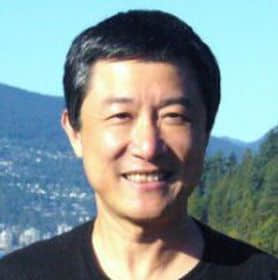 Li DengChief AI OfficerCitadel
Li DengChief AI OfficerCitadel Ashok SrivastavaChief Data OfficerIntuit
Ashok SrivastavaChief Data OfficerIntuitmoderator:
 Fang YuanVice PresidentBaidu Ventures
Fang YuanVice PresidentBaidu VenturesAI in Finance
Yazann Romahi : The Pitfalls of Using AI in Trading Strategies (Slides)
Because of the success of momentum based strategies, most AI practitioners come into finance thinking they can achieve easy wins by applying AI to time series analysis. We outline how this can be a trap, and other common misconceptions about AI in finance. We discuss the value of new sources of data and how we have used them successfully. By way of example we walk through an application of natural language processing to enhance our equity long/short and event driven hedge fund strategies.
Li Deng : From Modeling Speech and Language to Modeling Financial Markets (Slides)
I will first survey how deep learning has disrupted speech and language processing industries since 2009. Then I will draw connections between the techniques for modeling speech and language and those for financial markets. Finally, I will address three unique technical challenges to financial investment.
Ashok Srivastava : Using AI to Solve Complex Economic Problems (Slides)
Nearly half of all small businesses fail within their first 5 years. However, AI-driven solutions can help solve complex economic problems for consumers and small businesses like missed bill payments, insufficient capital, overinvestment in fixed assets, and more.
Ashok Srivastava discusses technology's role in solving economic problems and details how Intuit is using its unrivaled financial dataset to power prosperity around the world. Leveraging technology enablers like deep learning, natural language processing, and automated reasoning and combining with a delightful end-user experience and sophisticated UX, Intuit is using technology to help its users have more confidence in their financial management.
Ashok Srivastava discusses technology's role in solving economic problems and details how Intuit is using its unrivaled financial dataset to power prosperity around the world. Leveraging technology enablers like deep learning, natural language processing, and automated reasoning and combining with a delightful end-user experience and sophisticated UX, Intuit is using technology to help its users have more confidence in their financial management.
4:30 - 5:30pm
Internet of Things
 Sameer SharmaGlobal GM IoTIntel
Sameer SharmaGlobal GM IoTIntel Rohit TripathiGM & Head of ProductsSAP Digital Interconnect
Rohit TripathiGM & Head of ProductsSAP Digital Interconnect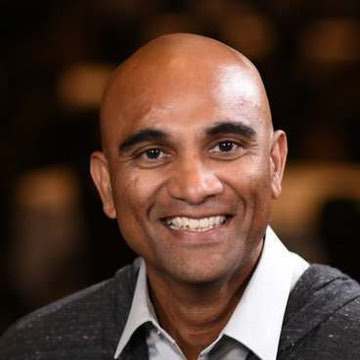 Himagiri MukkamalaGM & SVPARM
Himagiri MukkamalaGM & SVPARMmoderator:
 Gregory La BlancFaculty DirectorHaas School of Business
Gregory La BlancFaculty DirectorHaas School of BusinessInternet of Things
Sameer Sharma : Going for the Edge - AI @ IOT
IOT implementations have moved from “Connect the Unconnected” to Smart Connected devices and solutions. The next big inflection point will be around autonomous systems. AI + Data will play a pivotal role in enabling this autonomy. This will play out in Intelligent factories, cities and buildings. We will use Computer Vision as an example to walk through this imminent step-function transition.
Rohit Tripathi : Using intelligent connectivity and AI to transform the world of IoT (Slides)
We are amidst significant improvements in sensors and device capabilities coupled with enhancements in AI together with promise of low latency, high speed connectivity and availability of options e.g. 5G, NB-IoT. The confluence of these three trends has the potential to transform and simplify the world of IoT. This talk will explore these trends and the related impact to the world of IoT.
Himagiri Mukkamala : The fifth wave – AI driven computing for IoT (Slides)
We are entering an era of data-driven computing – IoT will collect, 5G will transport it and ML will process it. The combination of these forces coming together will bring transformation unlike anything seen before. 5G alone is expected to bring economic impact akin to the industrial revolution. The IoT is predicated to bring trillions to many different industries. The fifth wave represents massive opportunity for the ecosystem to create new businesses and drive economic growth. Those 1T devices will not just be connected, they will be intelligent - a paradigm shift enabled by ML in every IoT end point. The bigger impact of AI is already happening today as machine learning is becoming part of our daily lives in billions of tiny moments. Machine Learning will be needed to handle the massive amount of data that will be part of the fifth wave. Data itself isn’t always valuable if the volume obscures the important info. We can use ML at the edge to identify the critical data that should be shared. This is why we as an industry need to focus on the edge for the future of AI. We’ve worked hard on moving data to processing somewhere else, but for a trillion devices, that approach isn’t sustainable. Moving, processing and storing data all has costs in terms of efficiency and security. We need to shift our focus to processing the data where it is collected and used driving more value from IoT.
5:30 - 6:00pm
Keynote
 Kai-Fu LeeChairman & CEOSinovation Ventures
Kai-Fu LeeChairman & CEOSinovation VenturesKeynote
Kai-Fu Lee : The Era of Artificial Intelligence (Slides)
In this talk, I will talk about the four waves of Artificial Intelligence (AI) , and how AI will permeate every part of our lives in the next decade. I will also talk about how this will be different from previous technology revolutions -- it will be faster and be driven by not one superpower, but two (US and China). AI will add $16 trillion to our global GDP, but also cause many challenges that will be hard to solve. I will talk in particular about AI replacing routine jobs -- the consequences, the proposed solutions that don't work (such as UBI), and end with a blueprint of co-existence between humans and AI.
7:00 - 9:00pm
Dinner Banquet
 Jay YagnikVPGoogle AI
Jay YagnikVPGoogle AI
Dinner Banquet
Keynote speechJay Yagnik : A History Lesson on AI (Slides)
We have reached a remarkable point in history with the evolution of AI, from applying this technology to incredible use cases in healthcare, to addressing the world's biggest humanitarian and environmental issues. Our ability to learn task-specific functions for vision, language, sequence and control tasks is getting better at a rapid pace. This talk will survey some of the current advances in AI, compare AI to other fields that have historically developed over time, and calibrate where we are in the relative advancement timeline. We will also speculate about the next inflection points and capabilities that AI can offer down the road, and look at how those might intersect with other emergent fields, e.g. Quantum computing.
Banquet and Networking
The evening consists of sponsor pitch, and presentation from Jay Yagnik, VP of Google AI. The banquet is a full course sit down dinner with wine, and a chance to interact with the speakers on an one to one basis. You will have the opportunity to meet and mingle with other guests, build connections, raise company profile, form potential business and research partnerships.
Day 2November 10, 2018
9:00 - 9:05am
Day 2 Opening Remark
by Apoorv Saxena, Conference Co-Chair
by Apoorv Saxena, Conference Co-Chair
 Apoorv SaxenaGlobal Head of AIJPMorgan Chase
Apoorv SaxenaGlobal Head of AIJPMorgan ChaseDay 2 Opening Remark
by Apoorv Saxena, Conference Co-Chair
by Apoorv Saxena, Conference Co-Chair
9:05 - 9:40am
Morning Keynote
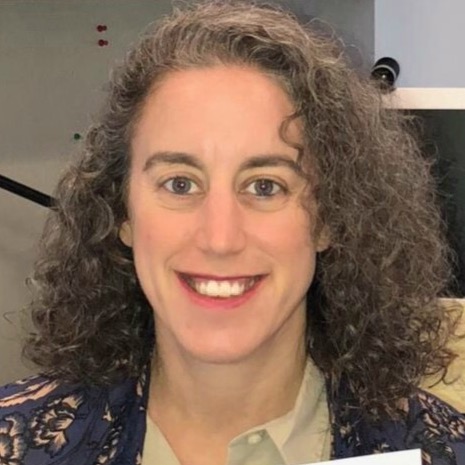 Melissa GoldmanChief Information OfficerJP Morgan Chase
Melissa GoldmanChief Information OfficerJP Morgan ChaseMorning Keynote
Melissa Goldman : AI & Finance (Slides)
AI in finance is having wide-ranging impact and solving some of the most critical societal problems. The talk gives overview of the opportunities of applying AI in finance with specific examples and highlights some of the unique challenges financial services firms face in deploying AI at scale.
9:40 - 10:40am
Robots
 Pieter AbbeelProfessorUC Berkeley
Pieter AbbeelProfessorUC Berkeley Mario MunichSVP TechnologyiRobot
Mario MunichSVP TechnologyiRobotmoderator:
 Mohan ReddyCTOThe Hive
Mohan ReddyCTOThe HiveRobots
Pieter Abbeel : Deep Learning for Robotics
Programming robots remains notoriously difficult. Equipping robots with the ability to learn would by-pass the need for what otherwise often ends up being time-consuming task specific programming. This talk will describe recent progress in deep reinforcement learning (robots learning through their own trial and error), in apprenticeship learning (robots learning from observing people), and in meta-learning for action (robots learning to learn). This work has led to new robotic capabilities in manipulation, locomotion, and flight.
Mario Munich : Consumer robotics: embedding affordable AI in everyday life (Slides)
The availability of affordable electronics components, powerful embedded microprocessors, and ubiquitous internet access and WiFi in the household has enabled a new generation of connected consumer robots. In 2015, iRobot launched the Roomba 980, introducing intelligent visual navigation to its successful line of vacuum cleaning robots. In 2018, iRobot launched the Roomba i7, equipped with the latest mapping and navigation technology that provides spatial information to the broader ecosystem of connected devices in the home. In this talk, I will describe the challenges and the potential of introducing consumer robots capable of developing spatial context by exploring the physical space of the home, and I will elaborate on the impact of AI in the future of robotics applications. Moreover, I will describe our vision of the Smart Home, an AI-powered home that maintains itself and magically just does the right thing in anticipation of occupant needs. This home will be built on an ecosystem of connected and coordinated robots, sensors, and devices that provides the occupants with a high quality of life by seamlessly responding to the needs of daily living – from comfort to convenience to security to efficiency.
10:40 - 11:20pm
Drones
 Arnaud ThiercelinHead of R&DDJI
Arnaud ThiercelinHead of R&DDJI Mark MooreEngineering DirectorUber
Mark MooreEngineering DirectorUberDrones
Industry experts from companies that are actively developing drones come together to discuss their work. What is the status of drones? Our speakers are Arnaud Thiercelin, Head of R&D of DJI, Mark Moore, Engineering Director of Uber.
Arnaud Thiercelin : AI in the Sky (Slides)
Mark Moore : Uber Elevate (Slides)
11:20 - 11:45pm
Distributed Deep Learning
 Anima AnandkumarDirector of Machine Learning ResearchNVIDIA
Anima AnandkumarDirector of Machine Learning ResearchNVIDIADistributed Deep Learning
Anima Anandkumar : Large-scale Machine Learning: Deep, Distributed and Multi-Dimensional (Slides)
As the data and models scale, it becomes necessary to have multiple processing units for both training and inference. SignSGD is a gradient compression algorithm that only transmits the sign of the stochastic gradients during distributed training. This algorithm uses 32 times less communication per iteration than distributed SGD. We show that signSGD obtains free lunch both in theory and practice: no loss in accuracy while yielding speedups. Pushing the current boundaries of deep learning also requires using multiple dimensions and modalities. These can be encoded into tensors, which are natural extensions of matrices. These functionalities are available in the Tensorly package with multiple backend interfaces for large-scale deep learning.
11:45 - 1:00pm
Lunch
1:00 - 2:00pm
AI in Enterprise
 Sumit GuptaVP of AIIBM
Sumit GuptaVP of AIIBM Nikhil KrishnanGroup VP, ProductsC3 IoT
Nikhil KrishnanGroup VP, ProductsC3 IoT Navin BudhirajaVP and General ManagerANSYS
Navin BudhirajaVP and General ManagerANSYSmoderator:
 T.M. RaviDirector and FounderThe Hive
T.M. RaviDirector and FounderThe HiveAI in Enterprise
Sumit Gupta : AI for the Enterprise (Slides)
The use of AI for voice search and image recognition is talked about often. Enterprises, however, have different challenges and requirements. In this talk, we will focus on talking about use cases in the enterprise and challenges in building out AI solutions. We will talk about how an Auto-machine learning software for videos and images called PowerAI Vision enables quick AI model training & deployment for various enterprise use cases.
Nikhil Krishnan : AI-Based Stochastic Supply Chain Optimization
Over the years, manufacturing companies have deployed Material Requirements Planning (MRP) software solutions that support production planning, and automated inventory and supplier management. However, most MRP software solutions were never designed to leverage emerging technologies of Big Data, and AI/Machine Learning – to better optimize supply chains.
In this talk, we explain how C3 Inventory Optimization applies new technologies and approaches to optimize inventory levels, improve service levels, and proactively manage supplier delays. C3 Inventory Optimization is able to manage several real-world uncertainties including variability in demand, supplier delivery times, quality issues with parts delivered by suppliers, and production line disruptions. C3 Inventory Optimization is particularly relevant to manufacturers of sophisticated equipment that are highly configurable, or manufacturers with a large number of SKUs – that are often dealing with significant complexity.
In this talk, we explain how C3 Inventory Optimization applies new technologies and approaches to optimize inventory levels, improve service levels, and proactively manage supplier delays. C3 Inventory Optimization is able to manage several real-world uncertainties including variability in demand, supplier delivery times, quality issues with parts delivered by suppliers, and production line disruptions. C3 Inventory Optimization is particularly relevant to manufacturers of sophisticated equipment that are highly configurable, or manufacturers with a large number of SKUs – that are often dealing with significant complexity.
2:00 - 2:50pm
AI in Games
 Long LinDirector of AIElectronic Arts
Long LinDirector of AIElectronic Arts Yuandong TianResearch ManagerFacebook AI Research
Yuandong TianResearch ManagerFacebook AI ResearchAI in Games
Long Lin : AI in Gaming (Slides)
Games have been leveraging AI since the 1950s, when people built a rules-based AI engine that played tic-tac-toe. With technological advances over the years, AI has become increasingly popular and widely used in the gaming industry. The typical characteristics of games and game development makes them an ideal playground for practicing and implementing AI techniques, especially deep learning and reinforcement learning. Most games are well scoped; it is relatively easy to generate and use the data; and states/actions/rewards are relatively clear. In this talk, I will show a couple of use cases where ML/AI helps in-game development and enhances player experience. Examples include AI agents playing game and services that provide personalized experience to players.
Yuandong Tian : Deep Reinforcement Learning Framework for Games (Slides)
Deep Reinforcement Learning (DRL) has made strong progress in many tasks, such as board games, robotics, navigation, neural architecture search, etc. I will present our recent open-sourced DRL frameworks to facilitate game research and development. Our framework is scalable so we can can reproduce AlphaGoZero and AlphaZero using 2000 GPUs, achieving super-human performance of Go AI that beats 4 top-30 professional players. We also show usability of our platform by training agents in real-time strategy games, and show interesting behaviors with a small amount of resource.
2:50 - 3:10pm
AI in Healthcare
 Alex ErmolaevDirector of AIChange Healthcare
Alex ErmolaevDirector of AIChange HealthcareAI in Healthcare
Alex Ermolaev : Major Applications of AI in Healthcare (Slides)
The latest AI advances have the potential to massively improve our health and well being. However, most of the work is yet to be done. In this talk, we will explore the most important opportunities for AI in healthcare. For example, we will explore how AI can diagnose major life-threatening conditions even before those conditions emerge. We will talk about AI ability to recommend dramatically more effective and less harmful treatment plans based on AI understanding of patient's medical history and current conditions. Finally, we will talk about AI role in making our healthcare system effective and affordable for everyone.
3:10 - 3:30pm
Language Learning
 Wei XuChief Scientist of General AIHorizon Robotics
Wei XuChief Scientist of General AIHorizon RoboticsLanguage Learning
The talk will be given by Wei Xu, Chief Scientist of General AI for Horizon Robotics.
Wei Xu : Language Learning in an Interactive and Embodied Setting (Slides)
3:30 - 4:00pm
Coffee Break
4:00 - 4:20pm
VC Speech
 Sarah GuoGeneral PartnerGreylock Partners
Sarah GuoGeneral PartnerGreylock PartnersVC Speech
A look at the future of AI applications and potentials for AI investment. Our speaker is Sarah Guo, General Partner of Greylock Partners.
Sarah Guo : Investing in AI Startups
4:20 - 6:00pm
Startup Demo Session
 Samir KumarManaging DirectorM12
Samir KumarManaging DirectorM12 Ankit JainFounding PartnerGoogle Gradient Ventures
Ankit JainFounding PartnerGoogle Gradient Ventures Yoav SametManaging PartnerStageOne Ventures
Yoav SametManaging PartnerStageOne VenturesStartup Demo Session
Demos from 10 startups, each startup has 5 minutes for the demo and 5-minute comments from the VC panel. Our VC Panelists are Samir Kumar, Managing Director of M12.
Startups made to the final list:
Startups made to the final list:

Pipeline AI: Fast, Safe, and Continuous Machine Learning Application Platform.
SyncThink’s revolutionary technology gives clinicians objective metrics for real time decision making.
Earth AI invented new generation mineral exploration technology.
Pefin provides AI based financial planning and advice.
Tribyl is a Customer Intelligence Platform that uses A.I. to automatically extract and share tribal knowledge behind why and how your customers buy (and stay), driving profitable revenue growth.
Cattle Care: autonomous dairy farms.
Triton helps content companies turn users into subscribers. We help them understand their behavioral segments and conversion funnel, and we use personalization to directly drive more subscriptions.
Day 3November 11, 2018
8:30am - 5:30pm (Full Day)
Training - Image Understanding with TensorFlow on GCP

 Ryan GillardResearch ScientistGoogle
Ryan GillardResearch ScientistGoogle Shuguang HanSoftware EngineerGoogle
Shuguang HanSoftware EngineerGoogleTraining - Image Understanding with TensorFlow on GCP
You will get hands-on practice building and optimizing your own image classification models on a variety of public datasets.
Prerequisites: Basic SQL, familiarity with Python and TensorFlow
If you don't know TensorFlow, please take this Coursera course before attending this bootcamp: https://www.coursera.org/learn/serverless-machine-learning-gcp
Outline
1. Introductory Module
The rapid growth in high-resolution image data available and Image applications.
2. Linear and DNN Models
Image classification problem with a linear model in TensorFlow.
Tackling the same problem using a Deep Neural Network.
3. Convolutional Neural Networks (CNNs)
This module will introduce Convolutional Neural Networks.
4. Dealing with Data Scarcity
5. Going Deeper Faster
How to train deeper, more accurate networks and do such training faster.
6. Pre-built ML Models for Image Classification
Use Cloud Vision API and AutoML Vision.
Prerequisites: Basic SQL, familiarity with Python and TensorFlow
If you don't know TensorFlow, please take this Coursera course before attending this bootcamp: https://www.coursera.org/learn/serverless-machine-learning-gcp
Outline
1. Introductory Module
The rapid growth in high-resolution image data available and Image applications.
2. Linear and DNN Models
Image classification problem with a linear model in TensorFlow.
Tackling the same problem using a Deep Neural Network.
3. Convolutional Neural Networks (CNNs)
This module will introduce Convolutional Neural Networks.
4. Dealing with Data Scarcity
5. Going Deeper Faster
How to train deeper, more accurate networks and do such training faster.
6. Pre-built ML Models for Image Classification
Use Cloud Vision API and AutoML Vision.
8:30am - 12:30pm (Half Day)
Tutorial - Sequence to Sequence Learning with Tensor2Tensor
 Lukasz KaiserStaff Research ScientistGoogle Brain
Lukasz KaiserStaff Research ScientistGoogle BrainTutorial - Sequence to Sequence Learning with Tensor2Tensor
Instructor: Lukasz Kaiser
Sequence to sequence learning is a powerful way to train deep networks for machine translation, various NLP tasks, but also image generation and recently video and music generation. We will give a hands-on tutorial showing how to use the open-source Tensor2Tensor library to train state-of-the-art models for translation, image generation, and a task of your choice!
Sequence to sequence learning is a powerful way to train deep networks for machine translation, various NLP tasks, but also image generation and recently video and music generation. We will give a hands-on tutorial showing how to use the open-source Tensor2Tensor library to train state-of-the-art models for translation, image generation, and a task of your choice!
8:30am - 12:30pm (Half Day)
Training - Natural Language Processing (for Beginners)

Training - Natural Language Processing (for Beginners)
Instructor: Mat Leonard
Outline
1. Text Processing
Using Python + NLTK
Cleaning
Normalization
Tokenization
Part-of-speech Tagging
Stemming and Lemmatization
2. Feature Extraction
Bag of Words
TF-IDF
Word Embeddings
Word2Vec
GloVe
3. Topic Modeling
Latent Variables
Beta and Dirichlet Distributions
Laten Dirichlet Allocation
4. NLP with Deep Learning
Neural Networks
Recurrent Neural Networks (RNNs)
Word Embeddings
Sentiment Analysis with RNNs
Outline
1. Text Processing
Using Python + NLTK
Cleaning
Normalization
Tokenization
Part-of-speech Tagging
Stemming and Lemmatization
2. Feature Extraction
Bag of Words
TF-IDF
Word Embeddings
Word2Vec
GloVe
3. Topic Modeling
Latent Variables
Beta and Dirichlet Distributions
Laten Dirichlet Allocation
4. NLP with Deep Learning
Neural Networks
Recurrent Neural Networks (RNNs)
Word Embeddings
Sentiment Analysis with RNNs
1:30pm - 5:30pm (Half Day)
Tutorial - Weakly Supervised Natural Language Understanding
 Ni LaoChief Scientist and Co-FounderMosaix.ai
Ni LaoChief Scientist and Co-FounderMosaix.aiTutorial - Weakly Supervised Natural Language Understanding
Instructor: Ni Lao
In this tutorial I will introduce recent work in applying weak supervision and reinforcement learning to Questions Answering (QA) systems. Specifically we discuss the semantic parsing task for which natural language queries are converted to computation steps on knowledge graphs or data tables and produce the expected answers. State-of-the-art results can be achieved by novel memory structure for sequence models and improvements in reinforcement learning algorithms. Related code and experiment setup can be found at https://github.com/crazydonkey200/neural-symbolic-machines. Related paper: https://openreview.net/pdf?id=SyK00v5xx.
In this tutorial I will introduce recent work in applying weak supervision and reinforcement learning to Questions Answering (QA) systems. Specifically we discuss the semantic parsing task for which natural language queries are converted to computation steps on knowledge graphs or data tables and produce the expected answers. State-of-the-art results can be achieved by novel memory structure for sequence models and improvements in reinforcement learning algorithms. Related code and experiment setup can be found at https://github.com/crazydonkey200/neural-symbolic-machines. Related paper: https://openreview.net/pdf?id=SyK00v5xx.
1:30pm - 5:30pm (Half Day)
Training - Self-Driving Car

Training - Self-Driving Car
1. William Yeoh
Topic:Heuristic Search and how does it apply to self-driving cars? (for Beginners)
Outline:
1. Technologies behind self-driving vehicles
- Motion Planning
- Decision Making
2. Graph Search Algorithms
- Depth-First Search
- Breadth-First Search
- A* Search
3. Incremental Heuristic Search Algorithms
- Repeated A* Search
- Adaptive A*
- Generalized Fringe-Retrieving A*
2. Mike Tang
Topic: How to use big data to enhance AI
Outline:
1. Spark ETL
Spark SQL
Spark Streaming
2. Spark ML
Spark ML pipeline
Distributed model tuning
Spark ML model and data lineage management
3. Spark XGboost
XGboost introduction
XGboost with Spark
XGboost with GPU
4. Spark Deep Learning pipeline
Transfer learning
Build Spark ML pipeline with TensorFlow
Model selection on distributed TF model
Topic:Heuristic Search and how does it apply to self-driving cars? (for Beginners)
Outline:
1. Technologies behind self-driving vehicles
- Motion Planning
- Decision Making
2. Graph Search Algorithms
- Depth-First Search
- Breadth-First Search
- A* Search
3. Incremental Heuristic Search Algorithms
- Repeated A* Search
- Adaptive A*
- Generalized Fringe-Retrieving A*
2. Mike Tang
Topic: How to use big data to enhance AI
Outline:
1. Spark ETL
Spark SQL
Spark Streaming
2. Spark ML
Spark ML pipeline
Distributed model tuning
Spark ML model and data lineage management
3. Spark XGboost
XGboost introduction
XGboost with Spark
XGboost with GPU
4. Spark Deep Learning pipeline
Transfer learning
Build Spark ML pipeline with TensorFlow
Model selection on distributed TF model






